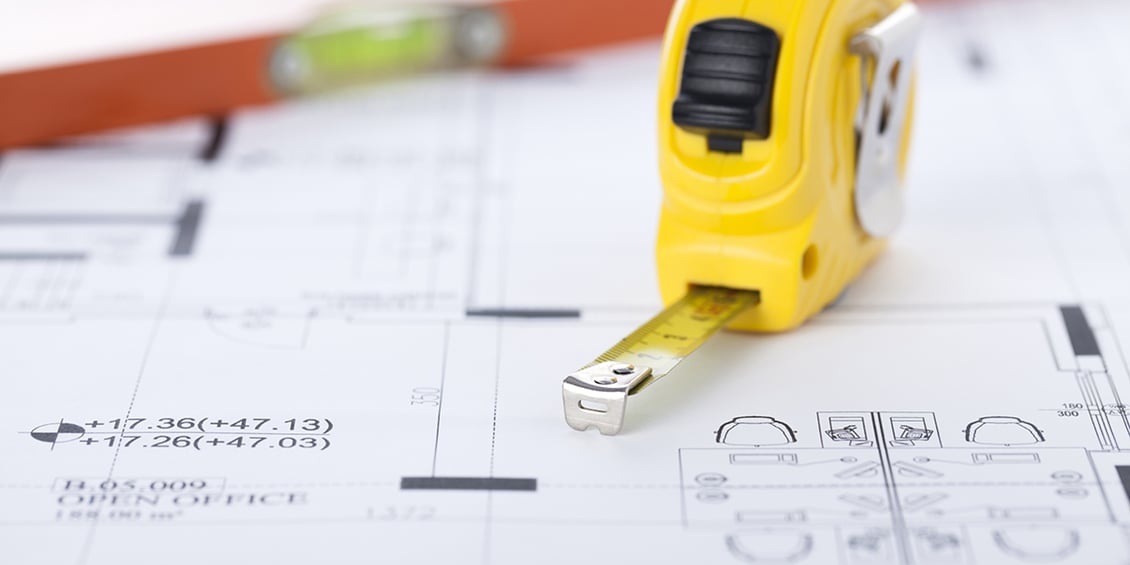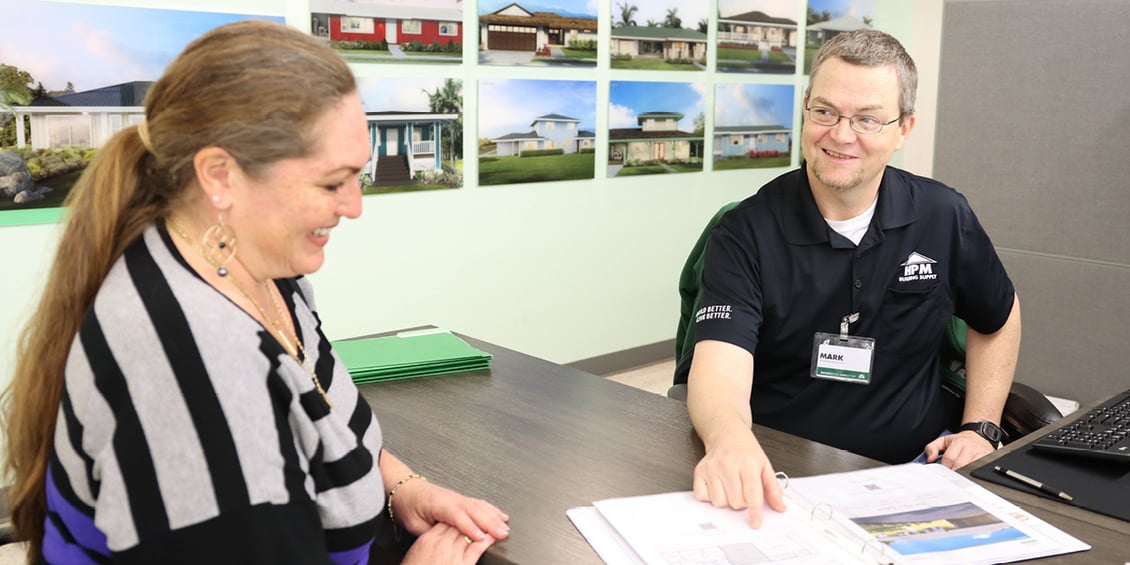[Updated] HPM Pre-Approved Homes: Complete Guide to Fast-Track Building on Hawaiʻi Island
This article has been updated as of November 2024
Expert guide to HPM's pre-approved home plans, wind zone considerations, and cost-saving
On the HPM Blog, our goal is to be your guide through the entire home building process.
You’ll find remodeling tips, design inspiration, advice on working with pros, DIY projects and more!
Building a new home is one of the most important and personal decisions you will make. It’s not just about the building materials coming together; this milestone in your life is about creating a space that reflects your personality and lifestyle—a place you can truly call home. You’ll be spending a lot of time in your new home, so make sure it’s somewhere you can picture yourself living happily for years to come. At HPM Building Supply, we take a tailored approach to homebuilding that takes you into account every step of the way.
Table of Contents
| Don’t Miss the Details
Get the Measuring Tape! |
| Which HPM Home Plan Is Right for You? |
Ready to Move Forward? Request Information Now!

Plan the Big Picture
Make a List. Check it Twice!
You may already have a complete vision in mind for your home, or you might have a few ideas. Your first step is to get all your thoughts down on paper, which will set the foundation for all the decisions to come. Compile a list of must-haves for the house you’re building—such as the number of bedrooms and bathrooms—down to details like the kitchen backsplash material and paint preferences.
Try to make decisions based on your lifestyle. Prioritize what makes you feel content and fulfilled, whether it’s taking up a new hobby or cultivating meaningful relationships with those around you. Visualize how your surroundings can help support your personal enrichment. Do you need storage for your kids or hobby equipment? Maybe you want an outdoor shower to wash off sand or your pet’s paws.
Did you know the average size of a living room is 340 square feet? Consider a great room concept in your home if you love to entertain to take maximum advantage of this open space.
Look at your potential future needs as well. Is there space to add a few extra rooms for a growing family? If this will be your forever home, you may want to include additional bedrooms to allow your parents to have a space to move into in the future.
Once you have a list, compare your needs vs. your wants and prune it to come up with the ideal wish list. Although building a home comes with the advantage of being able to design it according to your vision, you’ll likely need to make compromises and modifications here and there. But we’re here to provide recommendations to get you into a home you and your family will cherish.
Count the Bedrooms & Bathrooms
When considering the number of bedrooms and bathrooms for a new home, balance your budget and family size. A large family may need additional bedrooms to ensure everyone has their own space.
ADA requirements must also be considered for kūpuna or those with physical disabilities who need larger or specially equipped bathrooms. This is where HPM’s Home Planning Consultants come into play: Our customers can rely on their expertise to help navigate building codes and requirements so homeowners don’t have to take that on themselves. Here's a quick note: If you want more than three bathrooms, factor a plumbing riser plan into the budget as this usually requires an extra cost.
Building codes are constantly changing, so look into the specifics of the area you intend to build in before making any decisions.

Don’t Miss the Details
Get the Measuring Tape!
Space planning can be challenging when it’s your first time designing a home. It can be hard to visualize how your belongings will occupy a room that doesn’t exist yet. To more accurately plan out the space you’ll need, determine the square footage, measured by multiplying the length of a room by the width of your current home as a reference point. For instance, a 10 ft. x 10 ft. room (100 sq. ft.) might sound big enough, but if you’re planning on putting a king-size bed (6 ft., 4 in. x 6 ft., 8 in.) in the room, you won’t have much space left for other furniture. It can also help in terms of ‘feeling out’ and optimizing the flow of the space.
Also, consider future home needs for kūpuna and other family members who will age in place. You may need doorways wide enough for a wheelchair or other mobility equipment and more open space between bathroom and kitchen counters and fixtures. Taking the time to ensure accessibility now will help you avoid needing home modifications later.
Position the House to Your Advantage
The positioning of a house is often overlooked, but it can significantly impact your quality of life. Here are a few factors to consider when determining the best positioning:
Note that the best positioning will vary depending on the specific location, topography, and weather patterns in your area.
Where the home is positioned in relation to the sun will determine how much natural light will enter. If you prefer more natural light, include these details in your design:
Invest in Outdoor Living
In Hawai‘i’s tropical climate, outdoor living spaces are popular additions, whether you enjoy gardening, playing ball with your kids, running around with your dog, or having friends over for a barbecue or pau hana. Keep in mind that adding an outdoor space like a porch, backyard, or lanai will extend the scope and footprint of your house.
Which HPM Home Plan Is Right for You?
With 23 HPM Home models, you may want to narrow your options to help guide your planning. That’s why we made a quick and easy quiz to recommend home plans based on how you answer a few questions about your lifestyle. Choose what you like, and we’ll show you what we can build together.

With so many factors to consider when planning out a new home design, it’s wise to consult with an expert. Our HPM Home Planning Consultants are here to help you every step of the way, from designing the ideal floor plan to helping you select all the finishes for your new home to guiding you through permitting. Call us today or stop by one of our Home Design Centers to learn more about how we can help you create the right home for you and your ‘ohana!
|
Ready to Begin Your Homeownership Journey? Contact our HPM Home Planning Consultants to schedule a consultation. Hilo: (808) 865-5820 | Waimea & Kona: (808) 865-5865 | Kaua‘i, O‘ahu & Maui: (808) 727-1039
|
This article has been updated as of November 2024
Expert guide to HPM's pre-approved home plans, wind zone considerations, and cost-saving
Whether gearing up to put the first coat of paint on a newly-constructed condominium, or planning a refresh of a commercial property, there are a few
Since our founding in 1921, HPM Building Supply has been dedicated to helping Hawai‘i build and live better. We have transformed and grown in many
Once your building permit has been issued, construction can begin! At this stage, you’ll begin to see your vision come to life and your efforts come
Securing financing for your HPM Home is a crucial step in building your new home. Whether you’re a contractor or an owner-builder with a contractor,
Keep updated with the Latest News, Products, Deals and More!
© 2018 HPM BUILDING SUPPLY. ALL RIGHTS RESERVED
Receive the latest in HPM news, products, exclusive deals and more!
> Sign me up!©2023 HPM BUILDING SUPPLY | HOME PLANS, MATERIALS ALL RIGHTS RESERVED.

Copyright © 2022 HPM Building Supply. All Rights Reserved.